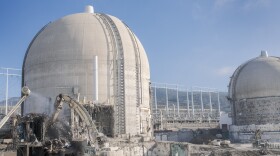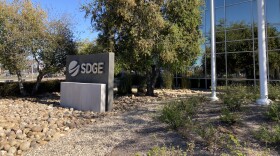Cal Fire on Tuesday lifted all remaining evacuation warnings for the Otay Mesa battery energy storage facility.
Firefighters remain actively engaged at the facility, which caught on fire on May 15. The incident showed how hard it was to fully extinguish lithium battery fires.
That's why Eden Valley residents do not want one in their neighborhood. They are actively fighting against the proposed Seguro Battery Storage Project at the site of a former equestrian school.
“I don't feel safe, and my kids don't feel safe either,” said Amanda Black, who lives next to the proposed site.
The Otay Mesa battery fire was a prime example of her fear.
“When the batteries catch on fire, which they do — it's not an 'if' scenario, it's a 'when' scenario — that there will be air pollution and we will have to evacuate from our home." She said. "That we will be breathing in the toxic fumes from the fires.”
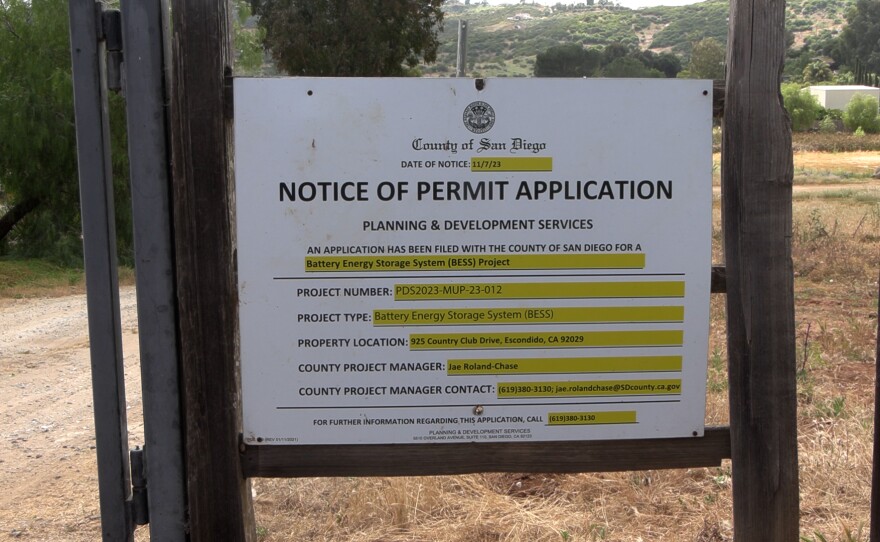
The concern is that batteries will overheat, leading to a chemical reaction with adjacent batteries that can cause fires in what's known as thermal runaway.
While there have been instances of that, Max Guarniere, the development manager at AES, said that's extremely rare.
Still, he said AES, the owner and operator of the proposed Seguro facility, takes great care to mitigate them.
“Lithium-ion fires are always a huge consideration of ours, and we always design our projects to mitigate that risk," Guarniere said. "And what we specifically do on our projects is we take a four-stage approach.”
Those four stages include a fire-suppression system within each battery module to isolate fires. (Each module is roughly the size of a DVD player). There are also smoke, heat and gas detectors.
Battery cells typically heat up and off-gas hydrogen before catching fire.
Guarniere said AES has taken lessons learned from previous battery energy storage system (BESS) failures to apply them here.
Those precautions, however, haven't eased Brenda Wright's concerns. She lives across the street from the proposed Seguro site.
“This is not just a fire," she said. "This is toxic. Like fumes that you can't breathe. If you breathe, it could damage you for life. It could kill you.”
She's also concerned about the evacuation route. Country Club Drive, a two-lane road, is the only ingress and egress for residents in Eden Valley.
"There's just no way out," Wright said. "It was really scary having to evacuate for fires."
When she had to evacuate for the Cocos Fire 10 years ago, Wright said it took her nearly an hour to travel half a mile down the road.
Guarniere said BESS' overall safety record is strong and improving, citing research from the nonprofit Electric Power Research Institute, which shows that the rate of accidents is decreasing.
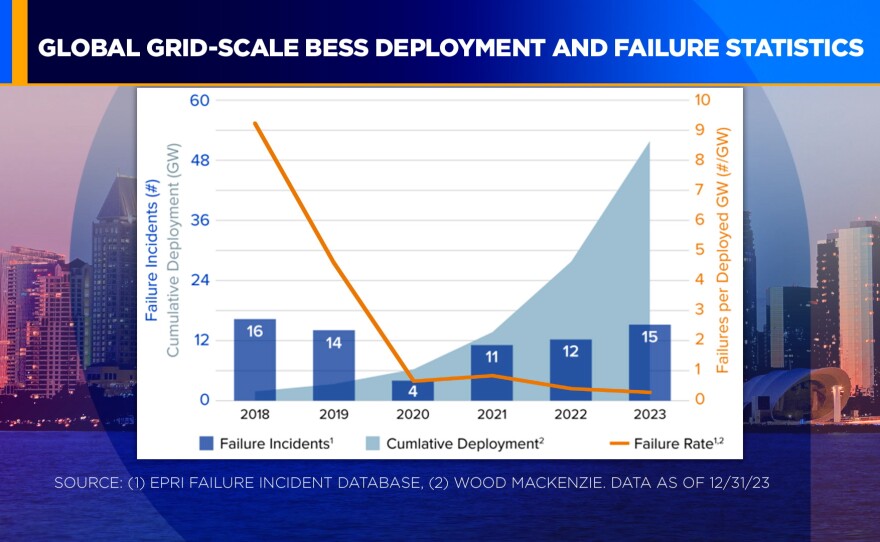
He said the company has rigorously tested its fire suppression system, including a fire test to show that the fire won't spread beyond the initial starting point.
"If we can't prove that, then we have to redesign the project, and we won't install it that way," Guarniere said. "And the reason we do that now is because then we're essentially proving that if there is a fire and there is a failure and a catastrophic event won't occur."
Despite being close to homes, AES said the site is a good location to serve the community's energy needs. It’s near the SDG&E Escondido substation and can directly feed into it without installing long overhead transmission lines.
“So we look at where's the energy demand ... what areas are prone to or susceptible to brownouts and blackouts," Guarniere said. "And then those are the types of areas that we want to site these projects.”
AES said the site has enough energy storage to power 240,000 homes for four hours.
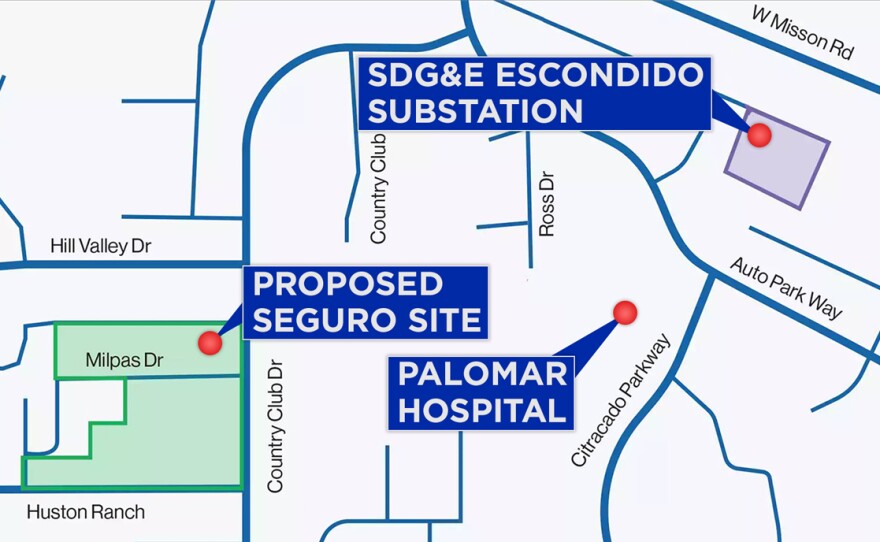
Guarniere said this project aligns with California's goal to achieve a 100% carbon-free energy grid by 2045.
"So facilities like our proposed Seguro Battery Storage Project are needed all over the state," he said. "And typically they need to be sited near where there's energy demand."
Residents in Eden Valley said they like the idea of a battery storage facility to stow green energy. They're just not convinced that it should be in a residential area.
"It's a new technology. And I feel like we are the guinea pigs of the neighborhood," Black said. "And there are so many residences on all four sides of this facility that's being proposed. It's just — I don't feel safe."
The Seguro project is still in the early stages. AES still needs to complete an environmental impact report and other regulatory filings.
Meanwhile, Eden Valley residents have started a petition on Change.org to stop the project.





